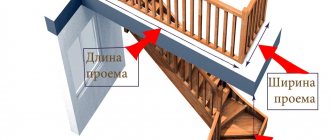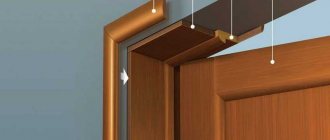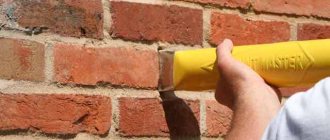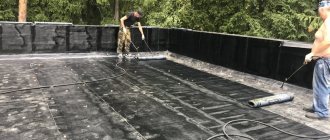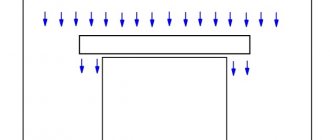Projects of old and modern multi-storey buildings do not always suit individual apartment residents. Narrow doors create discomfort and prevent the passage of large furniture. To solve the problem, widen the openings by demolishing part of the partition. There are projects with the downside of the issue - the doors are too wide. The overall sash sags on its hinges under the weight and looks ugly. To solve this problem, apartment residents begin to narrow the doorway during a major renovation.
What are the risks? Documentation
Not all factory doors are suitable for installation in an interior opening, which is especially true for those apartments that were built in Soviet times. Only widening the existing opening will save the situation. New door units have standard dimensions, which makes them very different from older products that have been in place for several decades.
Great options could be height or width. The problem can be solved through the functional and decorative arrangement of the interior passage. The hole in the wall can be made larger or smaller. Expanding an opening in a load-bearing wall is not always safe. If you plan to restore a partition that is not the functional basis of the building, nothing bad will happen. In this case we are talking about walls made of cellular concrete, plasterboard or any other building material. But the work can be troublesome when it comes to the need to transfer a metal profile.
If you want to increase the passage in a load-bearing wall, then such a reconstruction will be a redevelopment. Work in this case must be carried out in accordance with a separate project, which contains an engineering calculation of the redistribution of loads on the floor after the amount of changes made. When expanding an opening in a load-bearing wall, you should collect some documents that are prescribed by regional requirements. This should include:
- documentation for housing ownership;
- certificate from the local BTI;
- an extract from the house register;
- reconstruction plan from an architectural organization;
- floor plan of the building;
- plan of all stages of work.
In the end, the decision to increase the passage can be a real red tape. This list of documents is not necessary for show, but for the safety of people who live in and around the apartment. If the load-bearing partition is damaged without permission, this can lead to the collapse of the wall and the collapse of part of the house. It is worth avoiding irreparable consequences by strengthening the opening.
We reduce and increase the size of the doorway correctly
Projects of old and modern multi-storey buildings do not always suit individual apartment residents. Narrow doors create discomfort and prevent the passage of large furniture. To solve the problem, widen the openings by demolishing part of the partition. There are projects with the downside of the issue - the doors are too wide. The overall sash sags on its hinges under the weight and looks ugly. To solve this problem, apartment residents begin to narrow the doorway during a major renovation.
Expansion parameter calculations
If you have a door structure that can fit a hole in the wall, you can calculate the exact parameters. You should not cut the opening by eye; it is necessary to make precise markings. You must measure the width and height of the existing door, the width and thickness of the door frame that comes with the kit.
At the next stage, you will need to find out what is the width of the platbands that you plan to install. It is important to choose the right threshold and measure its height. It may not exist. Before you begin to expand the opening in the load-bearing wall, you need to determine the width of the passage, which will be the sum of the thickness of the frame post, the width of the door leaf and 2 cm technological gaps on each side. You can determine the height of the doorway by adding the height of the threshold to the thickness of the frame . The technological gap should be added to the obtained value.
Typically the wall thickness is 75 mm. If other indicators are available, extensions should be added when the walls are wider. An alternative solution would be to purchase a box with a narrow beam. Before you begin to expand the opening in the load-bearing wall, you should take measurements and markings, carrying out the work with high accuracy. If the gaps are taken with a margin, they may not cover the wide platbands during decorative finishing.
Our services
We will provide construction design for any type of objects and work, including those affecting load-bearing walls. Our services include:
- surveys, measurements and checks for design, documentation;
- preparation of documents for approval of any types of work, including technical conclusions, reports, calculations;
- support at all stages of approvals in municipal and state bodies.
You will not have any problems obtaining permits, since all documents are drawn up strictly in accordance with the law, SP, GOST, and other regulations.
Arch calculation according to state standards
If you want to remove the arched vault when transitioning to an adjacent room, there is no way to avoid widening the transition. Before making an arched opening, you should calculate it. The opening can have any type of configuration. The shape of an arched vault can be any, while a curved bend can be attributed to a creative eye.
When constructing an opening in a load-bearing wall, it will be more difficult to make a classically shaped arch with the correct bend of 45 cm, so you need to stock up on certain equipment to carry out calculations on a scale of 1 to 50. Among the available tools and materials, you should highlight paper and a compass.
When calculating, you will need to use the Pythagorean theorem from the school curriculum: R² = L² + (R²-H²). The well-known Pythagorean formula made it possible to derive, and for masters of the construction field to use, a formula for calculating the radius of the circle of an arch in an opening. You will need to use a calculation based on the following formula: R = L² + H²/2H.
To determine the radius of the arch, you can use simpler, but not entirely accurate, calculations. To do this, a doorway of expanded dimensions is depicted on paper. Previously, a piece of wallpaper was used for this. After this, you should install a compass on the axis of symmetry and, changing the radius, draw several arcs. This way you can choose the best option; the remaining radii are then erased.
Prices: Diamond cutting (diamond blade)
| Thickness of structures (cm.) | Brick | Concrete | Monolith | Asphalt |
| Up to 12 | 400 | 700 | 900 | 500 |
| 13-15 | 600 | 900 | 1300 | 650 |
| 16-19 | 800 | 1200 | 1600 | 800 |
| 20-22 | 1200 | 1600 | 2000 | 1200 |
| 23-25 | 1600 | 2000 | 2300 | — |
| 26-30 | 2000 | 2300 | 2800 | — |
| 31-35 | 2300 | 2800 | 3300 | — |
| 36-40 | 2800 | 3300 | 3800 | — |
| 41-50 | 3300 | 3800 | 4300 | — |
| 51-60 | 3800 | 4300 | 4800 | — |
| 61-70 | 4300 | 4800 | 5300 | — |
| 71-80 | 4800 | 5300 | 5800 | — |
Where to begin
Before constructing an opening in a load-bearing wall, the old door structure must be dismantled and the opening strengthened. If the work is carried out in an old panel house, then reinforcement can be done after the concrete cutting is completed. As for brick openings, they require special attention. When manipulating a brick wall, you should prepare certain tools and materials, such as:
- coupling bolts;
- tie channel;
- hairpins;
- metal corners;
- steel plates;
- cement mortar;
- petrol cutter;
- electric drill;
- Bulgarian
The coupling bolts must have a diameter of 20 mm. The diameter of the pins is 16 mm. Steel plates should be made from sheet steel. Instead of a grinder, you can use an electric cutter or a gas cutter. Diamond wheels should be prepared for the angle grinder. You can cut concrete using a variety of tools, but diamond cutting is the most suitable option.
You will need jacks or supports for the duration of the work. When you need to cut a brick wall, you should also prepare a hammer drill. The class of material used for reinforcement and the cross-section of the beam should be determined during preliminary load calculations.
The obtained figures should be included in the design documentation for the redevelopment of the premises. The steel channel profile should fit into the thickness of the brick wall by approximately 25 cm. Its length is selected taking this into account. To install the tightening bolts, holes are made in the channel; there must be at least 3 of them. This will be enough for an opening of medium length. The channel ties are located at a distance of 50 cm.
How can I reduce it?
The opening in the wall does not always need to be enlarged; sometimes, on the contrary, it is increased. This is done to install a door or window of a smaller size, or if an excess section has been cut off.
The easiest option is to use a beam.
Sequencing:
Using a plane, the timber is adjusted to the desired size. The final workpiece should not protrude beyond the edge of the wall. The surface is sanded so that the putty fits better on it.- To attach the blanks to the wall, holes are drilled in them. Anchors and bolts are used to secure the posts and lintels.
- The gaps are filled with construction foam. Small cracks are filled with putty.
- When the structure is installed, it is impregnated with a primer and lined with a suitable material.
It must be taken into account that the sash will be regularly subjected to dynamic loads. Therefore, there should not be a large distance between the fastening steps.
In addition to timber, the opening can be reduced using materials such as:
- Drywall. To install it, you will need to assemble a frame based on an aluminum profile. Drywall sheets are fixed with self-tapping screws.
- Foam blocks. They are easy to work with; they are used mainly in houses with thick walls. The blocks on the sides of the opening are placed in columns on top of each other, and the lintel is made of timber.
- Bricks. For this type of masonry, it is recommended to make the lintel from metal corners.
Any of the listed materials can be used to narrow the opening in a concrete wall.
Carrying out dismantling work
Before constructing a doorway in a load-bearing wall, you first need to create markings on the plane. The process will be somewhat easier if you use diamond cutting. An excellent option would be circles that reach a cut depth of up to 10 cm. During operation, the walls are wetted with water, which will reduce dust formation. It is important to remember about safety measures, namely:
- protective suit;
- respirator;
- gloves;
- special glasses.
The construction of a doorway in a load-bearing wall provides for double-sided operation. It will be necessary to cut out from different sides due to the massiveness of the partition. Before dismantling work, the opening is strengthened. The best option for increasing the reliability of a load-bearing partition would be to use welded frames that are pulled together with studs through the walls.
When expanding a doorway in a load-bearing concrete wall, you should work in small areas in the form of squares or rectangles. In brick partitions, a through cut is usually made, while the blocks themselves must be knocked down with a hammer drill, after which you can use a sledgehammer if necessary. If we are talking about concrete, you should not use a hammer drill for it. Vibration effects can be destructive to the panel, which will lead to the formation of microcracks and weaken the entire structure. Brick walls require a different approach.
What is it for?
Expanding a doorway involves increasing its main dimensions by certain values. Such operations are not performed very often, since all dimensions are adjusted to the standard dimensions of the door leaves. But sometimes you need to widen the hole. There are several main reasons that lead to such actions:
- Redevelopment of the premises. This process involves changing the basic positions or dimensions of the main structural elements of the house. This is done quite rarely, since in most cases it requires coordination with various government organizations.
- Door installation. Many owners of apartments or private houses decorate their premises with beautiful wide door panels. This additionally provides several advantages, since, if necessary, it allows you to carry large items through the doors.
Additional opening requirements and standards
Before you start enlarging the opening in the load-bearing wall, you must understand in which building the work is being carried out. If the building is block or panel, and was not designed by MNIITEP or Mosproekttoul, then the doorway can be made. But certain requirements will be imposed on him.
For example, the opening should be removed from the outer wall or from the existing opening in the load-bearing wall at a distance of 1 m. When constructing an opening in the load-bearing wall, craftsmen often wonder what the width of the box should be. Typically this value is 900 mm. Rarely, and in some series, the opening width ranges from 1000 to 1200 mm. However, this value should not be exceeded.
If you started to expand a doorway in a load-bearing wall, and the building was designed by MNIITEP, then such work may be prohibited if the apartment is located on the first or second floor. This is due to the fact that in these cases the remaining sections of the wall will not correspond to the strength calculations under the load from the floors located above. MNIITEP can permit and expand the doorway in a load-bearing wall only in one partition. From this it should be concluded that the possibilities of constructing the opening and its location, as well as its dimensions, will be determined by the organization that is the author of the project.
The property owner will have to obtain a technical opinion on the safety and admissibility of redevelopment. Based on the conclusion and design documentation, the relevant approval body will issue a permit for repairs. When expanding an opening in a brick load-bearing wall, you should use SNiP 3.03.01-87, which specifies the requirements for enclosing and load-bearing structures.
Is changing the dimensions and location of the passage considered redevelopment?
To expand or narrow a doorway in a panel house, you will have to change the length of the adjacent wall. In the technical passport for the apartment, the door is shown schematically. Dimensions are usually not indicated, but the BTI has all the data. When expanding or narrowing the passage in the wall, the layout of the room, originally provided for in the project, is violated. Over time, if you want to sell the apartment, great difficulties will arise with the preparation of documentation.
By law, changing the size or location of the opening for a door block is considered redevelopment. It is advisable to legitimize the corresponding actions. To obtain permission to expand or narrow an interior doorway in a panel house, you need to contact the BTI.
Methods of expansion and features of work
To expand the opening, you can use one of several methods. The method can be crude, in this case the following are used:
- sledgehammer;
- perforator;
- jackhammer.
At the first stage, you need to outline the contours on the wall, and then use tools to knock off the excess material. This process is quite labor-intensive, and microcracks formed due to impact loads can cause a decrease in the strength of the wall. The opening in the load-bearing wall can be enlarged using the dry cutting method. Here you will need a grinder, with which it is quite easy to enlarge the opening along the intended contour. The disadvantage of this process is that the wall must be cut from both sides.
Dry cutting creates a lot of dust, and you will also experience rapid wear on the diamond blade. Cutting can also be wet. This method is accompanied by the use of a spray bottle, with which you can irrigate the surface while working with an angle grinder. It would be more rational to use a construction cutter with a diamond blade. It must have a large diameter. You should also use a water container.
Effect of wall thickness
Wall thickness is the main indicator that helps determine the cutting method. If the depth of the slot is no more than 10 cm, you can use a grinder. If the concrete thickness is 8-10 cm, you need to work with a high-power machine. If the wall is 15-16 cm, you need to use a circular saw (discs with a diameter of 350-400 mm). You can use a grinder, but you will have to work in several stages and there is a risk of the tool overheating.
For concrete with a thickness of 30 cm or more, you need to use a special wall cutting tool, it can be of manual or machine type. Concrete up to 60 cm thick is cut with a tool such as a chain saw or ring cutter. Concrete over 60 cm thick is cut using machines using a 100 cm disc, or rope cutting devices.
What to consider before starting work
Before enlarging a doorway in a load-bearing wall, you must ensure that there are no hidden wiring, pipes or fittings inside the partition. There may be a chimney inside. To obtain detailed information, you should use a metal detector. When any obstacles are found, they can be eliminated by moving the electrical wiring to another location or moving 300 mm away from the chimney. If there are pipes inside, they are dismantled and moved, but this will require the help of a specialist.
The main stages of increasing the opening
Redevelopment of an opening in a load-bearing wall at the first stage involves removing the additions and platbands using a nail puller. It is necessary to remove the canvas from the hinges by lifting it from below with a crowbar. The vertical posts must be cut with a grinder and torn off with a nail puller. If the height of the opening in the load-bearing wall is increased, the top lintel must be torn off. Otherwise, it is left in place.
The magnification contour should be marked around the perimeter. Holes are made along the marking line with an impact drill to simplify dismantling work. The panel needs to be cut on each side. After cutting the reinforcement with blows with a sledgehammer, it is necessary to remove the remains of the wall. The opening should be reinforced with metal corners, pieces of rod or strips.
Tool
To narrow or widen doorways in an apartment, you will need a simple construction tool:
- hammer, sledgehammer, long chisel;
- hand saw for wood;
- plane;
- hammer drill, drill, screwdriver, grinder;
- pliers, figured and straight screwdriver.
The set of materials depends on the work performed. To narrow the interior doorway, you will need a wooden beam, a metal profile, drywall, brick or foam block. The blocks are laid using cement mortar, and the gypsum board sheets are fixed to the metal frame with self-tapping screws. When expanding the doorway in height, you will need a metal corner to strengthen the upper lintel.

